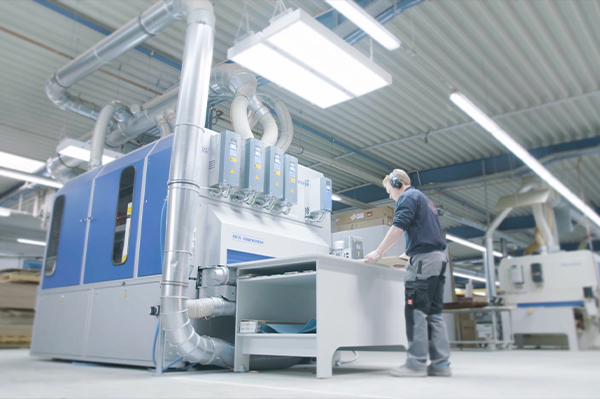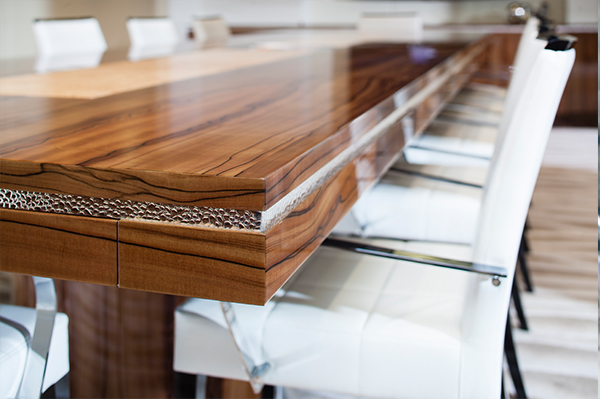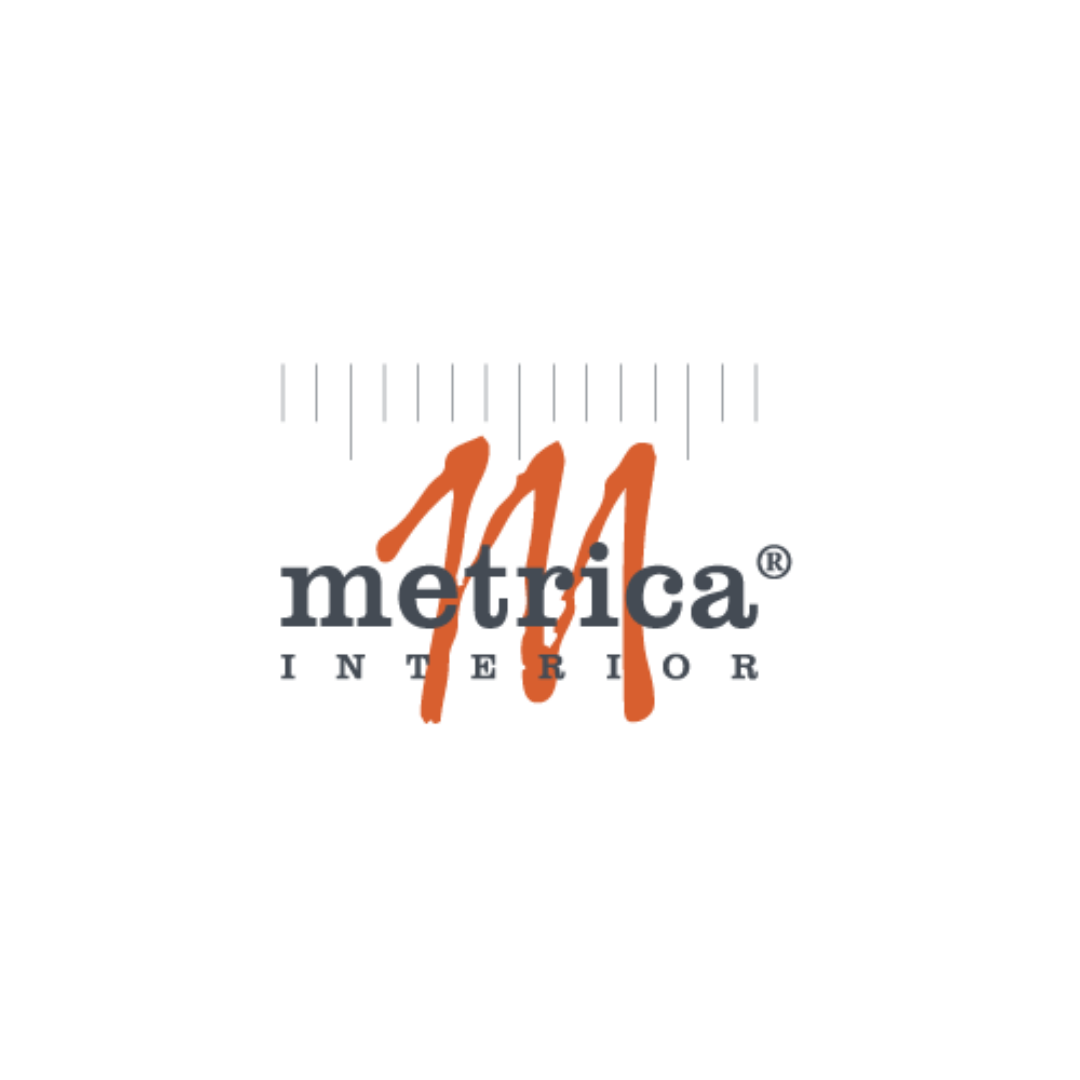
The quality requirements of customers and the demands placed on one's own work determine daily work in the craft sector. If you want to sand a surface and achieve the best result, there is no way around a Heesemann machine, says Kai Dittmar, managing director of metrica® INTERIOR. His company builds interior fittings for yachts and residences and bought two “MFA Impression” series surface sanding machines in 2002 and 2013. Both machines are important elements in the production chain. In an interview, metrica® evaluates the sanding machines.
“We are a completely normal craft company,” emphasizes 47-year-old Kai Dittmar. You can see why he says that when you enter the brightly lit factory halls in Senden. Here, more than 100 employees plan, measure, design, saw, planed, veneered, sanded, painted and polished. The floor is clean, the air is filled with nothing more than the conversation between colleagues and the operating noise of the machines. No room that the traditional company expands is the same; every part must and is taken into hand, says Kai Dittmar: “Each and every one of us is there with passion and is dedicated to every detail.” At the same time, the number of orders is increasing, project runtimes are falling from more than 24 months to an average of 14 months, delivery times are becoming shorter, and customer quality demands are increasing. How can the quality of surfaces, for example, continue to be guaranteed?
“Our name stands for unique interior design at the very highest level,” says the managing director of the traditional company, which looks back on a 330-year history. “In order to be able to meet the ever-increasing requirements of our clients and at the same time deliver the outstanding quality for which we are known, we purchased the first MFA Impression from Heesemann in 2002. ”

The MFA Impression offers proven industrial machine technology for crafts, interior design and industry in a compact version. The body can accommodate up to four different units — calibrating units, transverse sanding units, longitudinal sanding units and plate brush units as well as an additional, fifth brush unit. The customer decides which units are used in which order. As with large industrial machines, the belt support and the operating side can be freely selected. In 2002, the new surface sanding machine was to be used primarily for veneer sanding. That is why I decided
metrica® for equipment with three units, a transverse sanding unit, a longitudinal sanding unit with switchable calibration function and another longitudinal sanding unit. Even though veneer sanding was the main goal in this case, the machine can of course do more: It sands materials as diverse as wood, veneer, corian, cork, linoleum, paper honeycombs, acrylic glass, plastic, rice husks, foam, cement fibers or ballistic, i.e. bullet-resistant material.
Quick start-up within just two days, on-site training by Heesemann employees, uncomplicated service, quick set-up times of the machine in general — metrica® rated all of these aspects positively in collaboration with Heesemann.
That's when Alfons Engbert, Deputy Production Manager at metrica®, goes into detail: “As a craftsman, you know how important it is that the bands run precisely when sanding.” Only then is a flat surface created, which is decisive for all further processing steps. Both sanding machines used by metrica® stand out in this regard due to their absolutely perfect, precise operation. The company uses various sanding belts with a grain size of 60 to 2,500.
He would also like to highlight another technical feature of the machine, which effectively supports him and his team in their work on the perfect result. To ensure that the sanding result is still perfect, i.e. as flat as possible, tolerances in the workpiece must be compensated for. Accurate control of the sanding pressure is therefore crucial for high-quality and uniform sanding quality of the surface. All Heesemann machines, including the MFA Impression used by metrica®, are equipped with the CSD® magnetic pressure bar system for this purpose. “CSD” stands for “computer-controlled selective pressure regulation.” This means that the sanding pressure on each individual element in the pressure bar can be continuously changed in milliseconds. The elastic pressure bar effectively compensates for differences in the thickness of up to 2 mm within a workpiece or between several workpieces.
An absolutely flat surface is crucial, especially in high-gloss sanding, which is now very popular with metrica® customers. High-gloss sanding is the main task of MFA Impression, which bought metrica® from Heesemann in 2013. This machine is therefore equipped with four units, including two transverse belts. The two cross bands make it even easier to prepare the surface for painting. The minute of a μm (1 μ= 1 micron, i.e. in this case 1 millionth of a meter) is ground off with each pass. On the entire surface, however, this can very well reach an order of magnitude that even laymen can imagine: “If we have 75 grams of paint on a workpiece as a result, then we may have applied 150 grams,” explains Alfons Engbert. Walking through the factory halls, he shows a door that has just passed the last of 14 painting processes. It shines in deep mahogany red, a polished box is bordered with golden paint. Alfons Engbert asks his guest to pay attention to the reflection of the ceiling lamp in the horizontal door. The tube can be seen straight away. Even the smallest unevenness in the surface after sanding and polishing would distort the straight image after painting, he explains. “Even after all these layers of paint, I rate the result as perfect. This is only possible because MFA has honed Impression perfectly beforehand,” says Kai Dittmar, summarizing his experience with high-gloss sanding.
In addition to improved options for high-gloss sanding, the most important decision criterion for this machine was the future-oriented investment, for example through the possibility of expansion. The MFA was therefore equipped from the outset with a device for the fifth unit, which will now be retrofitted in 2016.
“Heesemann offers incredibly high quality at still reasonable prices. We think the price-performance ratio at Heesemann is great. “Kai Dittmar, managing director at metrica® INTERIOR
Thanks to a special sanding program, effects can be achieved with both surface sanding machines. “We sand waves, deserts or dunes into our workpieces when the customer wants us to,” Alfons Engbert smiles. The MFA Impression acquired in 2013 makes it particularly easy to implement a wide variety of effects because its engine is water-cooled. This allows you to let this Heesemann machine run extremely slowly and achieve special effects. “You wouldn't even be able to do that with other machines,” Alfons Engbert is certain. The water-cooled motor was therefore also on the list of reasons “pro Heesemann”, as it is an innovation from the company from 2010 that other surface sanding machines did not have and which the MFA Impression 2002 could not yet have.

“We get top performance out of our Heesemann surface sanding machines every day. Even after more than ten years, our first MFA Impression is running without any noticeable drop in quality,” summarizes Kai Dittmar. That is why Heesemann was logically also on the list of suppliers when offers for another surface sanding machine were obtained in 2013. “We made intensive comparisons and deliberately chose Heesemann again,” says the managing director. “Because Heesemann offers incredibly high quality at still reasonable prices. We think the price-performance ratio at Heesemann is great.” He emphasizes: “The 'old' MFA Impression continues to run continuously and will continue to be used in the future. ”
Kai Dittmar summarizes his experience: “Heesemann surface sanding machines are an essential part of our production chain so that we can meet our quality standards. And they will remain so. ”
Objekteinrichtungen GmbH & Co. KG
Bahnhofstraße 73
48308 Send
germany
Telephone: +49 2536 3309-0
Fax: +49 2536 3309-30
www.metrica.deinfo@metrica.de
